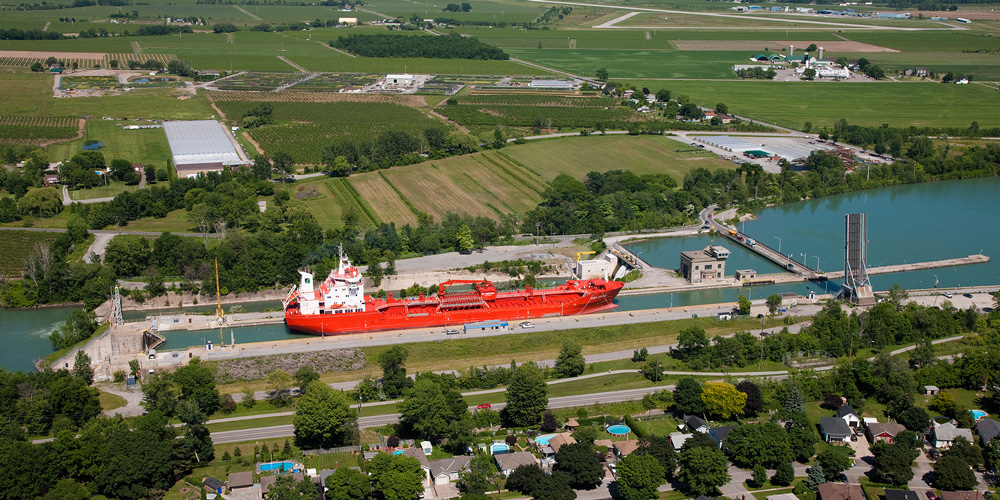Seaway Announces Green Power Projects for Welland Canal
June 26, 2007
St. Catharines, Ontario, June 26, 2007 – The St. Lawrence Seaway Management Corporation (SLSMC) announced today that an agreement has been reached with Rankin Renewable Power Inc. to develop three “green” hydropower projects within the Welland Canal. Under the terms of the agreement, St. Catharines based Rankin will construct and operate the three power stations, to be located at the weirs adjacent to Locks 1, 2 and 3.
The agreement which covers a 25 year term heralds a new age for clean and renewable energy production within the Welland Canal, with each of the power stations capable of generating 2 megawatts of electricity. Each facility will generate hydroelectric power in a run-of-the-river manner, using the water in the canal that is normally spilled over the existing weirs. Power generated from the facilities will be transmitted to local distribution lines owned by local electrical utility companies for use in the provincial grid.
Richard Corfe, President and CEO of the SLSMC, pointed out that the project stands as a strong testament to the Seaway’s commitment to corporate social responsibility. “Within the mandate assigned to us by Transport Canada, we are stewards of the Welland Canal. This opportunity affords us the means of expanding our role to harness the canal’s previously untapped power potential to benefit all Ontarians. The end result will supply homes with truly green power”.
Rankin Renewable Power Inc. was chosen through a competitive bidding process, and is a division of Rankin Construction Inc., a firm which has extensive experience in project management within the Welland Canal. The firm’s President, Tom Rankin, enthused about the potential of this development. “We are proud of this renewable power initiative and look forward to a continued long term relationship with the Corporation. In addition to supporting the Provincial and Federal green power initiatives, these three power plants will reduce greenhouse gas emissions by 38,900 tonnes of CO2 per year, the equivalent of taking 8,420 passenger cars off the road. Enough energy can be provided to power nearly 5,000 homes.”






